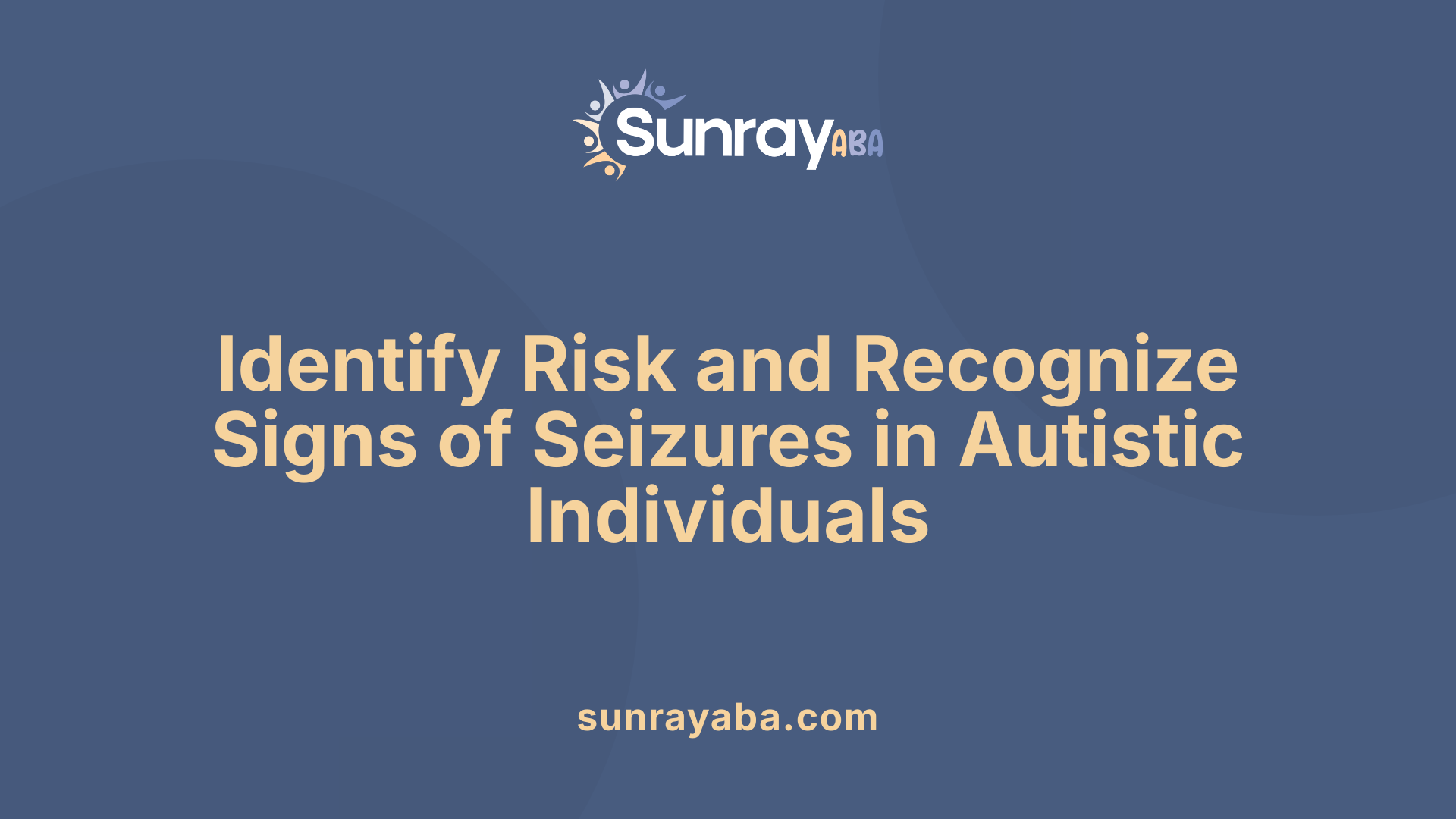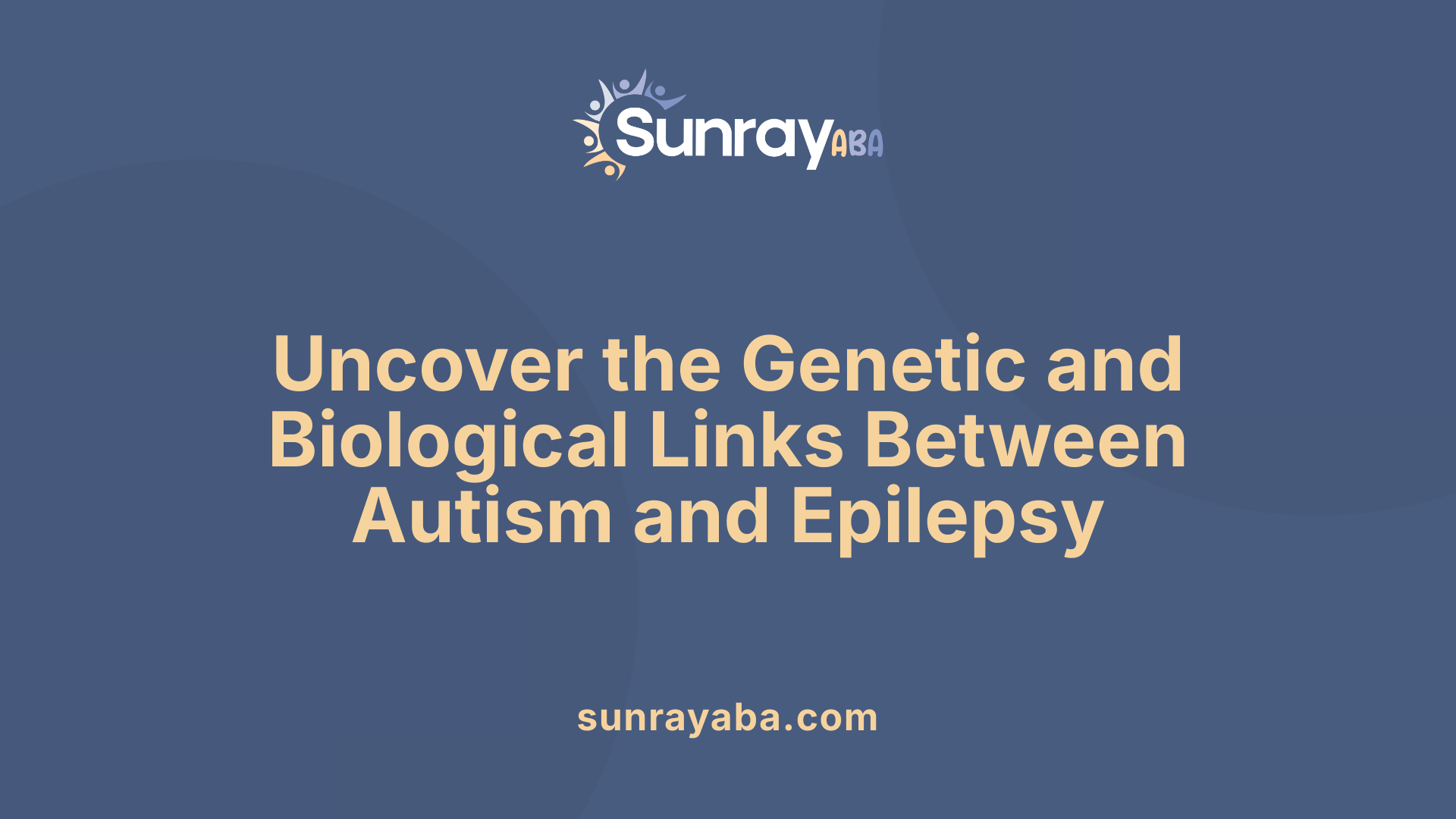Autism and Seizures/Epilepsy

Autism Spectrum Disorder and Seizures: An Overview
Autism Spectrum Disorder (ASD) is a neurodevelopmental condition affecting social communication, behavior, and cognition, with a considerable overlap with neurological conditions like epilepsy. Research has consistently shown that individuals with autism are more prone to develop seizure disorders, with prevalence rates varying across populations. This article explores the prevalence, types, causes, diagnosis, management, and ongoing research concerning autism and seizures, providing a comprehensive understanding of the critical relationship between these two complex conditions.
Prevalence and Demographics of Seizures in Autism

What is the prevalence of epilepsy among individuals with autism?
The occurrence of epilepsy in people with autism varies across studies and populations. Generally, around 12% of individuals on the autism spectrum are affected by epilepsy, but the prevalence can be higher in clinical settings, reaching up to 30%. This rate tends to increase with age, especially in teenagers and adults. Research indicates a higher prevalence among females, those with intellectual disabilities, and in individuals with specific genetic conditions like Rett syndrome and Tuberous Sclerosis. The close association suggests shared biological pathways underlying both conditions.
What are the signs and symptoms of seizures in individuals with autism?
Seizure signs in autistic individuals can be subtle and often overlap with autism behaviors, complicating diagnosis. Common manifestations include involuntary stiffening or jerking movements, staring spells, sudden episodes of confusion, and loss of consciousness. Behavioral changes such as automatisms—repetitive, automatic actions—may also appear. Sometimes, brief sensory or motor symptoms like rapid blinking or pauses in activity can signal seizures. Recognizing these signs promptly is vital for diagnosis and management, often requiring EEG tests and neurological assessments.
What are the causes and risk factors for seizures in individuals with autism?
Seizures in autism are primarily linked to genetic and neurodevelopmental factors. Specific gene mutations, such as in SCN2A, CASK, and CDKL5, are associated with both autism and epilepsy. Many genetic syndromes, including Rett syndrome, Fragile X, and Tuberous Sclerosis, contribute to seizure risk. Environmental factors like prenatal complications, brain injuries, or infections further increase susceptibility. Having comorbid conditions like intellectual disability magnifies the risk. Notably, the chance of developing seizures rises during adolescence, emphasizing the need for ongoing monitoring in this age group.
| Aspect | Details | Additional notes |
|---|---|---|
| Prevalence | 12-30% in autism | Higher in clinical samples |
| Age of onset | Peaks during teenage years | Most first seizures in adolescence |
| Gender differences | Higher in females | Autism more common in males, but epilepsy more in females with autism |
| Genetic links | Rett, Fragile X, Tuberous Sclerosis | Shared genetic mutations involved |
| Risk factors | Intellectual disability, brain injury | Environmental influences also significant |
The understanding of seizure prevalence and causes in autism supports tailored screening and early intervention strategies to improve outcomes for affected individuals.
Types of Seizures and Their Clinical Features in Autism

Are there specific types of seizures associated with autism spectrum disorder?
Yes, various seizure types are linked to autism spectrum disorder (ASD). These include generalized tonic-clonic seizures, absence seizures, and focal (partial) seizures. Children with autism are at a higher risk for developing epilepsy, especially after age 9. Certain genetic conditions such as Tuberous Sclerosis and Rett syndrome often involve specific types of seizures.
Febrile seizures, which occur with fever, are also common in young children with autism. Their presentation can vary widely, ranging from overt convulsive activity to subtle epileptiform EEG abnormalities even without outward symptoms.
The diversity in seizure types highlights the importance of accurate diagnosis and tailored treatment plans for autistic individuals experiencing seizures.
What are the signs and symptoms of seizures in individuals with autism?
Identifying seizures in individuals with autism can be challenging due to overlapping behaviors. Typical symptoms include involuntary stiffening, rhythmic jerking movements, episodes of staring, confusion, or sudden changes in behavior.
Seizures may also happen during sleep, presenting with lip-smacking, automatisms like hand rubbing, or head drops. Subtle signs such as brief pauses in activity, sensory changes, or unexplained agitation can be mistaken for autism behaviors.
Specific seizure types have distinct features: generalized seizures like tonic-clonic episodes involve full-body stiffening and shaking, while focal seizures may involve staring or localized twitching.
Careful observation, combined with neurological tests like EEG, is essential to differentiate seizures from routine autism behaviors to ensure appropriate treatment.
Genetic and Biological Underpinnings Linking Autism and Epilepsy
 Shared genetic mutations and syndromes
Shared genetic mutations and syndromes
Autism and epilepsy often intersect due to underlying genetic factors. Mutations in genes such as SCN2A, CASK, and FMR1 have been linked to both conditions, affecting neural functioning at a molecular level. Several genetic syndromes also commonly involve both autism and seizures, including Rett syndrome, Fragile X syndrome, Angelman syndrome, and Tuberous Sclerosis. These disorders involve chromosomal abnormalities or gene mutations that influence brain development and excitability.
Neurobiological mechanisms involved
The connection between autism and epilepsy is rooted in common neurobiological pathways. Disruptions in gene transcription regulation, synaptic development, and cellular growth lead to altered neural connectivity and brain circuitry. Imbalances between excitation and inhibition within neural networks increase seizure susceptibility and contribute to autistic behaviors. Mutations affecting ion channels and neurotransmitter systems further promote hyperexcitability, impacting brain plasticity and cognitive functions.
Impact of environmental factors
Environmental influences also play a role in the shared pathways of autism and epilepsy. Prenatal infections, head injuries, and maternal health issues can affect brain development and increase the risk of structural abnormalities. Other factors such as birth complications, jaundice, and infections may contribute to neurological vulnerabilities, especially in genetically predisposed individuals. These environmental factors can exacerbate underlying genetic susceptibilities, resulting in a higher likelihood of both conditions.
| Aspect | Description | Additional Details |
|---|---|---|
| Genetic mutations | Key genes like SCN2A, FMR1, and CASK linked to both conditions | Disrupt neural activity and synaptic function |
| Syndromes | Rett syndrome, Fragile X, Tuberous Sclerosis | Often involve structural brain anomalies and high seizure prevalence |
| Neurobiological pathways | Excitation-inhibition imbalance, synaptic dysconnectivity | Lead to hyperexcitability and developmental differences |
| Environmental influences | Prenatal infections, head trauma, maternal health | Affect brain development, amplify genetic risks |
Understanding these intertwined genetic and biological factors provides a clearer picture of how autism and epilepsy are connected. Ongoing research into shared pathways promises to inform more targeted and effective treatments for individuals affected by both conditions.
Diagnosis, Treatment, and Safety Strategies for Seizures in Autism
How are seizures diagnosed and managed in individuals with autism?
Diagnosing seizures in autistic individuals involves a comprehensive approach. Clinicians start with a detailed medical history and neurological examination to observe any behaviors or episodes that might indicate seizure activity. Electroencephalography (EEG) is used to detect abnormal electrical activity in the brain—up to 80% of children with autism show abnormal EEG results, even without outward seizure signs. Brain imaging like MRI or CT scans can identify structural brain issues contributing to seizures. Genetic testing, including chromosomal microarray and gene panels, may be recommended, particularly when syndromes like Tuberous sclerosis or Fragile X are suspected. Management of seizures generally involves anti-epileptic drugs such as Valproate, Lamotrigine, or Levetiracetam, tailored to the specific seizure type and the individual's response. For seizures resistant to medication, options like ketogenic diets, vagus nerve stimulation, or surgical procedures may be explored. Due to communication challenges in autism, recognizing seizure signs requires vigilance. Caregivers should be educated on behaviors like staring spells, stiffening, rhythmic jerks, or abrupt behavioral changes, which might indicate seizures. Coordination between neurologists, developmental pediatricians, and neuropsychologists ensures personalized treatment planning and ongoing monitoring.
Ongoing Research and Future Directions in Autism and Epilepsy
Research into the connection between autism and epilepsy continues to deepen our understanding of shared causes and potential treatments. Scientists are discovering specific genetic mutations, such as in the SCN2A gene, and protein abnormalities in Tuberous Sclerosis and Fragile X syndrome, that seem to increase the risk for both conditions. Large genomic studies and advanced neuroimaging techniques are providing new insights into how brain circuits are affected and may serve as early biomarkers for identifying at-risk children.
Progress is also being made in developing targeted therapies. Researchers are exploring personalized medicine approaches, including medications tailored to genetic profiles, and novel neuromodulation techniques like vagus nerve stimulation and brain stimulation. Early detection remains a priority, with improvements in screening tools helping identify children who may develop seizures or exhibit autistic traits before symptoms become severe.
In terms of safety, safeguarding individuals with autism and seizures involves understanding their specific signs and triggers, maintaining injury prevention measures, and ensuring effective communication strategies. These advancements promise to improve management, reduce seizure severity, and enhance quality of life for affected individuals.
What ongoing research findings related to autism and epilepsy?
Current investigations focus on elucidating shared genetic mutations and structural brain differences. Discoveries involve genes like SCN2A and conditions such as Tuberous Sclerosis, which are linked to both epilepsy and autism. Cutting-edge neuroimaging is revealing altered neural circuitry that may serve as early biomarkers.
What safety precautions should be considered for individuals with autism who have seizures?
It is crucial to recognize seizure signs, such as staring spells, stiffening, rhythmic jerking, and behavioral changes. Safety measures include supervision during activities, preventing drowning with safety precautions around water, and using medical alert identification. Caregivers should also maintain communication with healthcare providers for ongoing management and intervention strategies.
Bridging Knowledge and Care for Better Outcomes
The overlapping domains of autism and epilepsy present complex challenges but also unprecedented opportunities for improved diagnosis, management, and research. An integrated approach involving genetic insights, advanced diagnostic techniques, individualized treatment plans, and comprehensive safety measures can significantly enhance quality of life for affected individuals. Continued efforts in scientific research are vital to unravel the shared etiologies, develop targeted therapies, and support families navigating these intertwined conditions. As understanding deepens, collaborative care models promise better health, developmental progress, and wellbeing for those impacted by autism and seizures.
References
- Autism and Seizures: Whats the Connection?
- Epilepsy and autism - National Autistic Society
- Epilepsy and Autism: Is There a Relationship?
- Autism Spectrum Disorder and Epilepsy
- Epilepsy - Autism | Autistica
- Epilepsy in patients with autism: links, risks and treatment challenges
- Epilepsy and Autism - Practical Neurology
- Autism and Epilepsy: What You Need to Know If They Occur Together
- Seizures and Epilepsy—Autism Toolkit